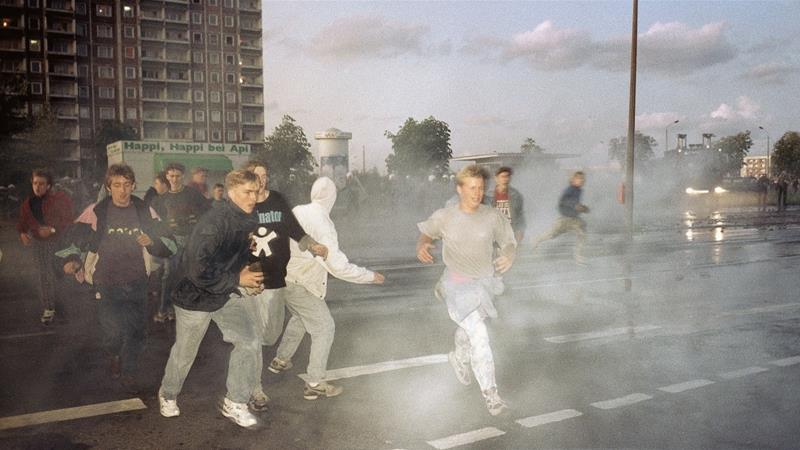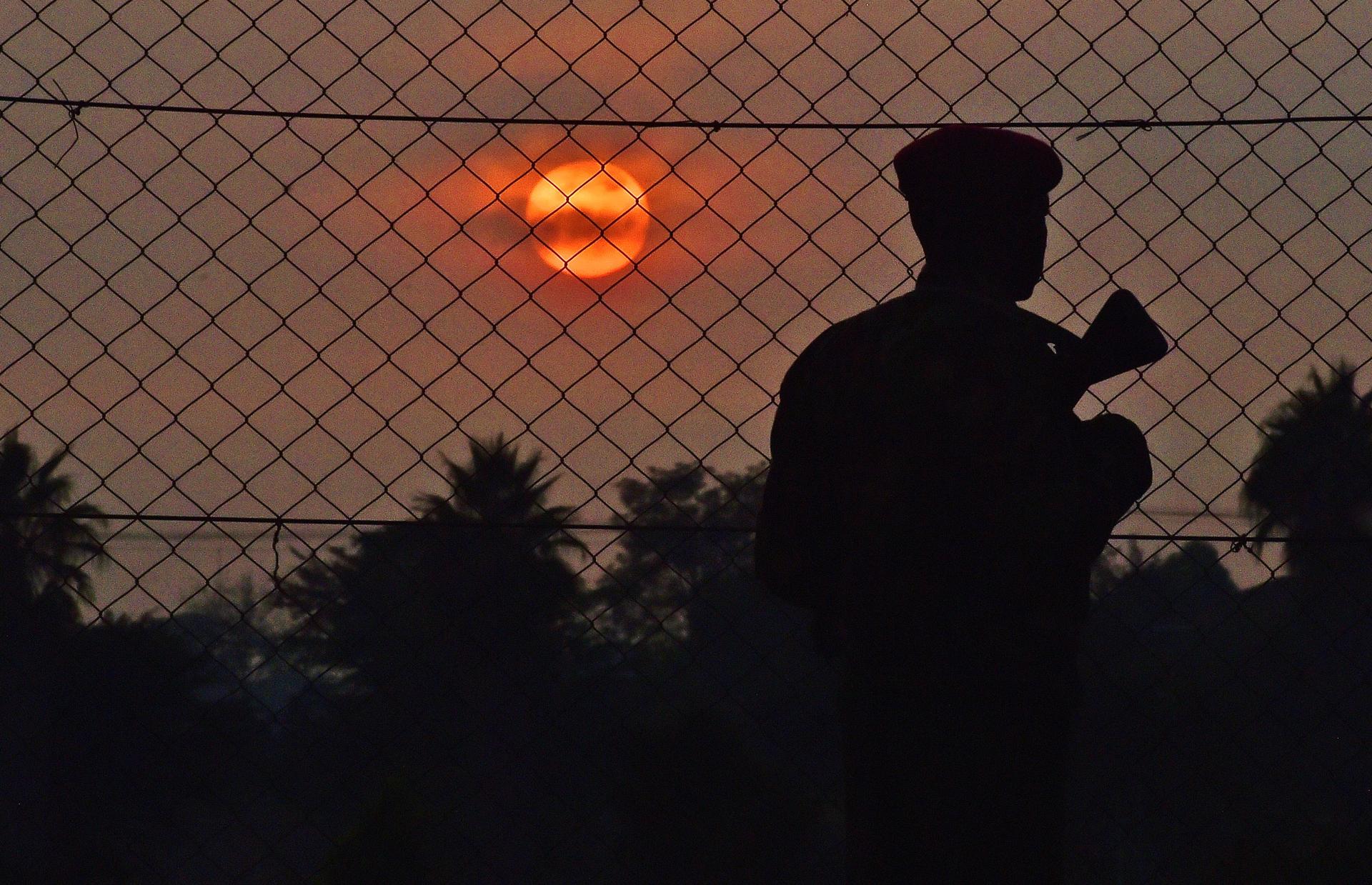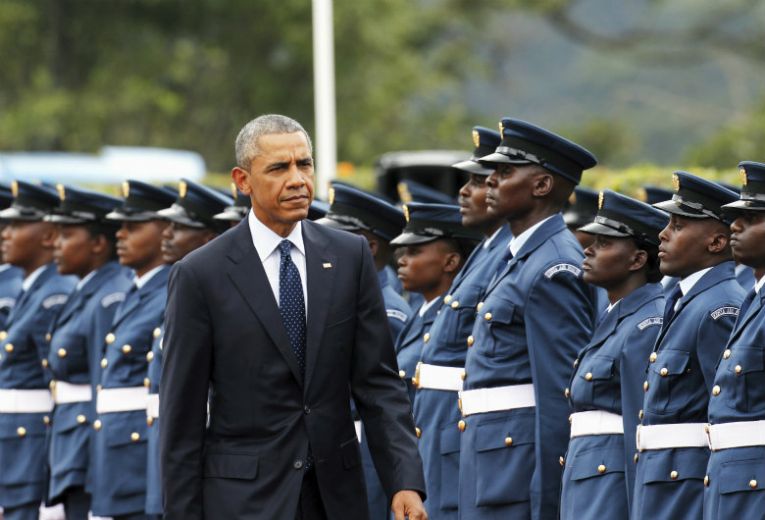German authorities looked the other way as a right-wing terrorist cell went on a seven-year killing spree. Now they won’t look in the mirror.
Read: Foreign Policy Magazine
As featured on Longform
German authorities looked the other way as a right-wing terrorist cell went on a seven-year killing spree. Now they won’t look in the mirror.
Read: Foreign Policy Magazine
As featured on Longform

Photo by Journalistenwatch, flikr.
Last week I wrote about an attack on a refugee housing complex in Altenburg, Germany, in which two baby carriages were set aflame. It occurred just two days after members of a right-wing, anti-immigrant movement called PEGIDA marched through the town. That piece grappled with the question of how Germany—a nation with an unparalleled record of confronting its past—has found itself once again home to a small but active collection of xenophobes willing to resort to hate speech or even violence against newly arrived refugees.
But what is Germany doing to protect asylum seekers from right-wing terrorism? In 2015, the newspaper Die Zeit counted 220 violent attacks against refugees but only four convictions. Last year, the number of attacks (including ones that did not result in violence) exploded to 3,500.
How to stop this proliferation? Read the full piece at Columbia Global Reports.

Photo by Arnaud333, Wikimedia Commons.
On December 7, 2015, two baby carriages were set on fire at an apartment complex housing refugees in the pristine Thuringia town of Altenburg. Ten refugees, including two infants, suffered from smoke inhalation. The attack came two days after right-wing protesters marched through the town carrying signs that read, “Please continue your flight. There’s nowhere to live here.”
“On the ground floor there was a woman living with her baby who had to jump out without shoes,” district administrator Michaele Sojka told me when I met her last June. “Everyone was really shocked that something like that could happen in our city.
Two men were arrested, and six months later one of them was found guilty of arson. The judge said the man had “acted on xenophobic motives.” The other was handed a fine for repeating Nazi slogans. “One of them must have been drunk that night,” Brit Krostewitz, a volunteer with the Altenburg Network for Integration, told me. “They are just stupid Nazis.” Most Germans know the type.
This is Germany, a country whose leaders just 80 years ago tried to deport and then exterminate all non-Christians and “outsiders.” A country so ashamed of its xenophobic past that to display any hint of nationalism, such as to wave a German flag during a soccer match, remained taboo. Germany, a liberal European state that goes so far as to limit speech—by criminalizing Holocaust denial—least anyone attempt to forget or manipulate that torrid past.
And yet, Germany has recently become a breeding ground for small pockets of xenophobic citizens to commit hate crimes and terrorism against foreigners.
Read the full story at Columbia Global Reports. This is the first part of a short series on refugees in Germany.

Illustration by Jawahir Al-Naimi/Al Jazeera
In Freital, Abu Hamid and his fellow refugees were attacked by right-wing Germans, who could be convicted of terrorism.
Freital, Germany – On Halloween night, 2015, in this town outside the Saxon capital of Dresden, Abu Hamid went into the kitchen to grab some food when he noticed sparks of light outside the window. Sensing danger, he and his roommates rushed out of the kitchen just as a booming explosion shook the house, shattering the windows and sending pieces of glass into one man’s face.
“After that, we thought someone would come inside the home and attack us,” Abu Hamid said. “One of my friends, he took a knife.”
The explosion was caused by illegal fireworks, as they later discovered. It appeared someone had placed them on the windowsill that night to target those inside. For months beforehand, local police had failed to see a connection between a series of right-wing protests against refugee housing shelters and the bombing of a car belonging to a left-wing politician in Freital. Just one month before Abu Hamid’s apartment was attacked, another, almost identical firework attack had been launched on the house of some Eritrean refugees in the town.
It wasn’t until news outlets as far away as Berlin began pressuring authorities to take action that Germany’s federal prosecutor took up the case. In a dramatic SWAT-style raid, federal and state police arrested five suspects believed to have formed an organised anti-refugee militia.
Read the full story at Al Jazeera. This is the fifth story in a seven-part series.

A police car is parked in front of an asylum shelter in Clausnitz in March 2016 [Hannibal Hanschke/Reuters]
Once the face of anti-refugee sentiment in Germany, Clausnitz and its newcomers have learned to co-exist.
On a cold night last year, some 70 Germans, mostly men, surrounded a bus of refugees in this small town and began chanting at them to “go home”.
It was February 2016, and nearly one million asylum seekers had arrived the previous year to Germany from the Middle East, Africa and elsewhere. As they waited to see if they’d be allowed to stay, they were sent off to live in different cities and towns across the country.
One bus with 15 asylum seekers from Syria, Lebanon, Iran and Afghanistan was sent one evening to the village of Clausnitz, in the eastern German state of Saxony.

Their hostile reception by protesters who shouted at them and blocked them from entering their apartments made international headlines. A video of the encounter circulated widely, reinforcing stereotypes of small-town Germans as racist and blemishing Germany’s so-called “welcome culture”.
The refugees pleaded to the driver to turn around and return them to the temporary shelters they’d been living in around Dresden, the Saxon capital. Neither the refugees nor the demonstrators wanted this. But then, neither had a choice.
Read the full story at Al Jazeera. This is the 4th story in a 7-part series.

Right-wing extremists run through spray from water cannons during clashes between police and demonstrators in Rostock, Germany, on Monday, August 24, 1992 [Thomas Haentzschel/AP]
In the quarter of a century since, many foreigners arriving in Germany have experienced the warmest of welcomes – but a few have experienced chilling acts of hatred. This series explores how a small minority of ultra-xenophobic Germans has tarnished their nation’s reputation as a haven for the world’s displaced masses. These stories are primarily told through the experiences of immigrants and asylum seekers who survived xenophobic harassment or attacks.
 Their stories are the exception to the norm: incidents of violent xenophobia are rare in Germany compared with other countries. Indeed, Germany has welcomed more asylum seekers in recent years than any other European nation – the United Kingdom, France, Poland, Austria, Hungary, and magnitudes more than the far more populous United States. When faced with the largest exodus of people since World War II, none of these nations welcomed refugees as unconditionally as Germany did. It’s precisely because of this reputation that Al Jazeera is taking a hard look at what happens on the occasions when that welcome culture goes awry.
Their stories are the exception to the norm: incidents of violent xenophobia are rare in Germany compared with other countries. Indeed, Germany has welcomed more asylum seekers in recent years than any other European nation – the United Kingdom, France, Poland, Austria, Hungary, and magnitudes more than the far more populous United States. When faced with the largest exodus of people since World War II, none of these nations welcomed refugees as unconditionally as Germany did. It’s precisely because of this reputation that Al Jazeera is taking a hard look at what happens on the occasions when that welcome culture goes awry.
This is the first story in a 7-part series. Read it at Al Jazeera.
Story 2: Ibraimo Alberto, a Mozambican immigrant and child of former slaves, encountered many opportunities in Germany. But he also experienced racism, big and small, in the east and west– including the murder of a friend. Read his story at Al Jazeera.
Story 3: The climate of fear and tension among more recent refugees arriving to Germany reached a climax one afternoon in October 2015 when a 32-year-old German man enticed a four-year-old Bosnian boy named Mohamed away from his family and abducted him. Read the story at Al Jazeera.
Story 4: On a cold night last year, some 70 Germans, mostly men, surrounded a bus of refugees in the small town of Clausnitz and chanted at them to “go home”. On the bus were 15 asylum seekers from Syria, Lebanon, Iran and Afghanistan. Their hostile reception by protesters who blocked their path made international headlines, reinforcing stereotypes of small-town Germans as racist and blemishing Germany’s so-called “welcome culture.” Neither the refugees nor the demonstrators wanted this. But then, neither had a choice. Read the story at Al Jazeera.
Story 5: On Halloween night, Abu Hamid went into the kitchen to grab some food when he noticed sparks of light outside the window. Sensing danger, he and his roommates rushed out of the kitchen just as a booming explosion shook the house, shattering the windows and sending pieces of glass into one man’s face. Local police had failed to see a connection between a series of right-wing protests against refugee housing shelters. It wasn’t until news outlets as far away as Berlin began pressuring authorities to take action that Germany’s federal prosecutor took up the case. In a dramatic SWAT-style raid, federal and state police arrested five suspects believed to have formed an organised anti-refugee militia. Read the story, Escaping Aleppo only to encounter terrorism in Germany, at Al Jazeera.
Story 6: A lawyer and his family fled death threats in Pakistan, so they flee to Germany for safety. Instead, their building is attacked–firebombed–by right-wing Germans. Khan wondered whether Germany would accept their asylum applications, and allow them to stay. “Tomorrow, I don’t know what will happen,” Khan said. “Maybe Germany will say, ‘Out!'” In fact, it did. Read the full story at Al Jazeera.
Story 7: Each week in Dresden, a group of refugees and Germans gather at a nondescript cafe hidden from view, pushed back from the street. The cafe provides a safe space for them to mingle with the locals to chat, practise their language skills, and sip tea and juice. It’s one of many spaces that have popped up across Germany to welcome refugees, help them with their asylum applications, teach them German, or just for engagement.
But this particular space, known as the “international cafe”, rests in an uncanny location. Dresden, the capital of Saxony, is a stronghold for Germany’s anti-immigrant politics. Each week, thousands of protestors chant that refugees should “go home” and denounce what they see as the Islamisation of Germany. Read the full story at Al Jazeera.

Ibraimo Alberto was born to former slaves in Mozambique when it was still a Portuguese colony. His parents worried he would be forced into slavery when he went to Germany [Jacob Kushner/Al Jazeera]
In the quarter of a century since, many foreigners arriving in Germany have experienced the warmest of welcomes – but a few have experienced chilling acts of hatred. This series explores how a small minority of ultra-xenophobic Germans has tarnished their nation’s reputation as a haven for the world’s displaced masses. These stories are primarily told through the experiences of immigrants and asylum seekers who survived xenophobic harassment or attacks.
Their stories are the exception to the norm: incidents of violent xenophobia are rare in Germany compared with other countries. Indeed, Germany has welcomed more asylum seekers in recent years than any other European nation – the United Kingdom, France, Poland, Austria, Hungary, and magnitudes more than the far more populous
United States. When faced with the largest exodus of people since World War II, none of these nations welcomed refugees as unconditionally as Germany did. It’s precisely because of this reputation that Al Jazeera is taking a hard look at what happens on the occasions when that welcome culture goes awry.

A child of former slaves, Ibraimo Ibraimo Alberto, a Mozambican immigrant, encountered many opportunities, but also experienced racism, big and small, in the east and west– including the murder of a friend. Read his story at Al Jazeera. This is the 2nd story in a seven-part series.
 Hamisi Athman Suleiman was a hardworking man. Born to a large Muslim family in the rural area of Mtongwe, just south of Mombasa on Kenya’s coast, Suleiman was a daily laborer doing odd jobs in the apartments of the military officers who lived at a naval base a short walk from his home.
Hamisi Athman Suleiman was a hardworking man. Born to a large Muslim family in the rural area of Mtongwe, just south of Mombasa on Kenya’s coast, Suleiman was a daily laborer doing odd jobs in the apartments of the military officers who lived at a naval base a short walk from his home.
On Jan. 11, sometime between 6:30 and 9:30 p.m., some of those military officers allegedly murdered Suleiman, 37, leaving his body in the woods.
According to eyewitnesses, interviews with local justice officials and documents from an array of civil rights and government accountability groups — as well as a full review of Suleiman’s court case — indicate he is one of hundreds of Kenyans and refugees who have been killed by Kenyan police and other law enforcement officers in recent years.
Read the full GroundTruth investigation at PRI’s The World.
 NAIROBI, Kenya — Kenyan police have fueled the fires of Islamic extremism and may actually be undermining the country’s security in an overzealous attempt to protect it, according to human rights activists and advocates for police reform.
NAIROBI, Kenya — Kenyan police have fueled the fires of Islamic extremism and may actually be undermining the country’s security in an overzealous attempt to protect it, according to human rights activists and advocates for police reform.
Widespread allegations of police corruption, brutality and arbitrary arrests that target Kenya’s Muslim minority population appeared to inform President Obama’s comments in a joint press conference with Kenyan President Uhuru Kenyatta on Saturday, part of Obama’s first trip to his father’s homeland since becoming president of the United States.
“What we have found through hard experience — I have shared this with President Kenyatta — is that if you paint any particular community with too broad a brush, if in reaction to terrorism you are restricting legitimate organizations, reducing the scope of peaceful organization, then there can have the inadvertent effect of actually increasing the pool of recruits for terrorism and resentment in communities that feel marginalized,” Obama said.
Read the full GroundTruth story at PRI’s The World.

President Barack Obama reviews a Kenyan Defense Force honor guard in Nairobi. (Photo: Thomas Mukoya/Reuters)
NAIROBI–Barack Obama is visiting his father’s homeland for the first time as president, and he could hardly have chosen a more critical moment. Kenya was once a peaceful nation known for safaris and beaches. But it has, sadly, evolved into something resembling a police state—the result of the Kenyan government’s response to a recent onslaught of terrorist attacks.
As Kenyan security forces attempt to defend their nation, terrorism analysts and human rights activists say they’re going about it all wrong—inflicting collective punishment on Muslims and clamping down on press. Now, one very big question remains: Can President Obama convince Kenya’s leaders to take action on terrorism and human rights?
Read the full story at TakePart.

VICE News.
Millions of Kenyans are celebrating the long-awaited return of Barack Obama, who on Friday will visit his father’s homeland for the first time as president to attend the 2015 Global Entrepreneurship Summit in Nairobi.
Obama’s visit will focus on economic development and counterterrorism efforts within the country against the Somali Islamist group al Shabaab, but it comes amid widespread abuse by Kenyan security forces of Muslims, refugees, and journalists. This has raised worries among rights advocates that he risks lending undue legitimacy to one of Africa’s more unscrupulous regimes.
Obama is visiting a country whose human rights record has taken a notably downward turn. Following years of steady attacks from al Shabaab militants within Kenya, including an assault on Nairobi’s Westgate shopping mall in 2013 that killed 67 and the massacre of 147 people at a university in Garissa earlier this year, local security forces are said to consistently engage in extrajudicial activity in the name of fighting terrorism, and are accused of harassing journalists and undermining press freedoms.
Read: VICE


SIMON MAINA
Kenya’s counterterrorism approach following the Westgate Mall attack is crude — and may actually be spawning more violence.
NAIROBI, Kenya — At around 7:30 p.m. on March 31, three blasts went off in Nairobi’s Eastleigh neighborhood. The explosions, which police say were caused by grenades, killed six and injured around a dozen civilians congregating at two local cafes in the suburban area, which is dominated by ethnic Somalis.
mens nike shox nz
The bombings were only the latest in a spat of terror attacks following the September 2013 siege of Westgate Mall by Somali gunmen, which left 67 people dead. In December, a grenade blast killed four people in Eastleigh. In late March, unidentified gunmen entered a church near the coastal city of Mombasa, killing six. In all, nearly a dozen attacks that bear the marks of al-Shabab, a jihadist group based in Somalia that was responsible for the Westgate attack, have rattled Kenya since last fall.
Police are taking a high-profile approach as they respond to these attacks, detaining thousands of Somalis and Kenyan citizens of Somali heritage. But stops and arrests are not based on intelligence. Rather, police officers simply scour ethnic-Somali neighborhoods, sweeping up civilians from the streets.
Terrorism analysts say this sort of policing may actually be making Kenya less safe. As indiscriminate profiling becomes the fabric of security procedures, hundreds of thousands of Kenyan-Somali Muslims — a group from which al-Shabab affiliates are actively attempting torecruit — have something to be angry about. The government’s ethnic-focused, and often brutal, anti-terror tactics thus may be fueling the very attacks they are meant to suppress.
Read: Foreign Policy Magazine
NAIROBI, Kenya —Today marks six months since gunmen trained by the Somali-based terrorist group al-Shabaab stormed a popular shopping mall here, in a siege that left 62 civilians and five Kenyan soldiers dead, and at least 200 others injured.
louis vuitton handbags online
The victims consisted of both Kenyans and expatriates. Their families and friends remained traumatized by the attack and angered by the government’s response, during which Kenyan soldiers looted the mall, even while bodies remained strewn about.
The Israeli-owned Westgate Mall opened in 2007. It was a popular hangout for Kenyans and expatriates alike until it collapsed during the September 2013 siege. But one group of Kenyans in particular holds a uniquely intimate connection to the mall and the event that destroyed it: These hundreds of Kenyans were employed in the mall’s 80 shops and restaurants, and depended on the mall for their livelihoods.
nike outlet stores
Their wages, small by western standards, supported their families or paid for their continuing education.
When the gunshots erupted, workers fled side-by-side with patrons. Some hid from the gunmen for upwards of 11 hours before being rescued. In small acts of heroism, some workers led others up or down staircases to safety, or out back doors.
In the aftermath of the attack, some were transferred to other franchise locations owned by their employers. But many lost their jobs entirely.
Six months later, GlobalPost asked mall employees to reflect on how the attack changed their lives and how they are coping with its long-lasting effects.
Read the full story and watch the video at PRI’s The World.

A 20-year-old Somali refugee demonstrates the gate to her family’s apartment that a Nairobi police officer threatened to break open before the family paid him a 2,000 Kenyan shilling ($25 US) bribe to leave. (Jacob Kushner/GlobalPost)
NAIROBI, Kenya — In the middle of a crowded downtown street stand two hundred men and women, listening to a religious debate between a Muslim cleric and a Christian priest.
The two take turns shouting into a microphone that amplifies their voices to the curious onlookers: ‘The Bible says…’ the priest begins. The cleric responds, “The Koran says…” and so on.
The ritual has become a daily phenomenon as Christians and Muslims come together to discuss their religions here in Eastleigh, the heart of Nairobi’s Somali Muslim community. But this religious debate held a special significance Monday, exactly one month after gunmen including at least one Muslim of Somali heritage began their deadly siege of Nairobi’s Westgate shopping mall.
Read the full story as it appeared at GlobalPost.

A giraffe eats a food pellet from the mouth of a foreign visitor at the Giraffe Centre, in the Karen neighborhood of Nairobi, Kenya Monday, Sept. 30, 2013. The risk to the country’s tourism was one of the first concerns expressed by officials during the initial days of the Westgate Mall siege, but tourists continue to fly to Kenya for safaris and beach vacations seemingly despite a number of foreigners being killed in last week’s attack. (AP Photo/Ben Curtis)
NAIROBI, Kenya (AP) — When Ohio resident Bill Haynes heard about the shooting at Westgate Mall by Islamic extremist gunmen last month, he considered canceling his upcoming 17-day safari to Kenya and Tanzania.
“You can’t help but be concerned,” said Haynes, 67. “Here’s a place we’re going to be in about five days and there are some terrorists shooting the place up. That would cause anybody to give some pause.”
Acting on advice from a friend in Nairobi, Haynes went through with his trip except for a stop at Lamu, a coastal city near Somalia where a French woman was kidnapped in 2011.
The risk to tourism was one of the first concerns officials expressed after the attack that left at least 67 dead including 18 foreigners. Tourism generates 14 percent of Kenya’s GDP and employs 12 percent of its workforce, according to Moody’s Investment Services and the World Travel and Tourism Council.
Moody’s predicts the attack will cost Kenya’s economy $200 million to $250 million in lost tourism revenue, estimating it will slow growth of Kenya’s GDP by 0.5 percent. Kenya’s 2012 GDP was $41 billion.
Read the full story as it appeared at the Associated Press.